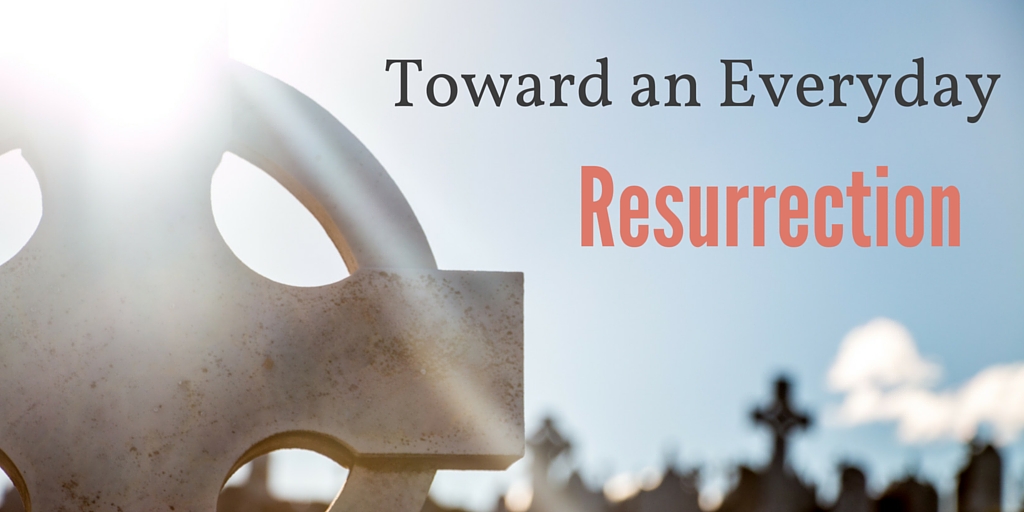Easter is over. We have celebrated the Resurrection and many of us are back to life as usual. These pivotal days of our faith seem to make little difference in the way we live.
It’s More than a Day
In the church calendar, Easter is a season, not a day. It extends from Easter Sunday until Pentecost, this year celebrated on May 15th and this is a good time to think about practicing resurrection in our own lives.
[Tweet “In the church calendar, Easter is a season, not a day.”]
Why, I wonder, are our lives not more transformed by the Resurrection? Sometimes I think it is because living into the reality of new life in Christ seems so overwhelming.
We imagine we need to dash off to be a missionary overseas, or give up the job we love to work with the homeless in the inner city. Perhaps we feel we need to sell all our possessions to live amongst the poor. Yet that is not what resurrection is all about.
An Everyday Resurrection
Jesus did such mundane, ordinary, everyday things in the days after his resurrection, events that provide us with a good starting point. If we were in charge of his PR campaign there would have been neon signs in the sky, interviews on CNN and audiences with world leaders. Approaching this Jesus would have been impossible, and following in his footsteps totally unimaginable. But that was not how Jesus came.
- He came to Mary as a gardener, not as a king. He was so ordinary that she did not recognize him at first, after all who really looks closely at the servant who tends the gardens?
- He made breakfast on the beach for his friends. Again it took them a while to recognize him. And it needed a bit of a miracle – 153 large fish weighing down their nets – for them to truly see who he was. Perhaps their eyes skimmed past him because of the ordinariness of how he looked and how he acted.
- He came as a stranger and walked for a whole day explaining the scriptures to a couple of his disciples before they recognized him. A stranger who walked rather than riding in a carriage is hardly a king, let alone the risen son of God.
- He comes to the disciples, afraid and hiding behind closed doors. He let them touch him, calmed their fears, and sent them out to change the world.
As we meet with our congregations during this Easter season we need to invite members to consider the ordinary, everyday things we could all do to live out the Resurrection.
A Few Ideas
First let us consider our own personal practices. In her article Spiritual Practices for the Easter Season, Lynne Baab suggests the simplest place to start practicing resurrection is in thankfulness. She encourages us to take note of the good gifts of God in our lives, express gratitude and love to people who have cared for us, and start a gratitude journal. These are wonderful ideas to suggest to our congregations.
There are simple ways to encourage those we disciple to reach out to others too. Perhaps there are situations in which we, like Jesus, could offer breakfast to our colleagues or friends. Or we might be able to take some neighbourhood kids out for a hike and talk to them about their life concerns, a little like a walk on the Emmaus road.
Resurrection living is not complicated. It is about ordinary people doing ordinary things just as Jesus did – simple acts of hospitality, companionship to the fearful, talking to strangers. How can you and your congregation be practicing resurrection more effectively during this season?
[Tweet “Resurrection living…is about ordinary people doing ordinary things just as Jesus did”]
Discover More about Resurrection Living at Praxis Gathering 2016
Share this Post

